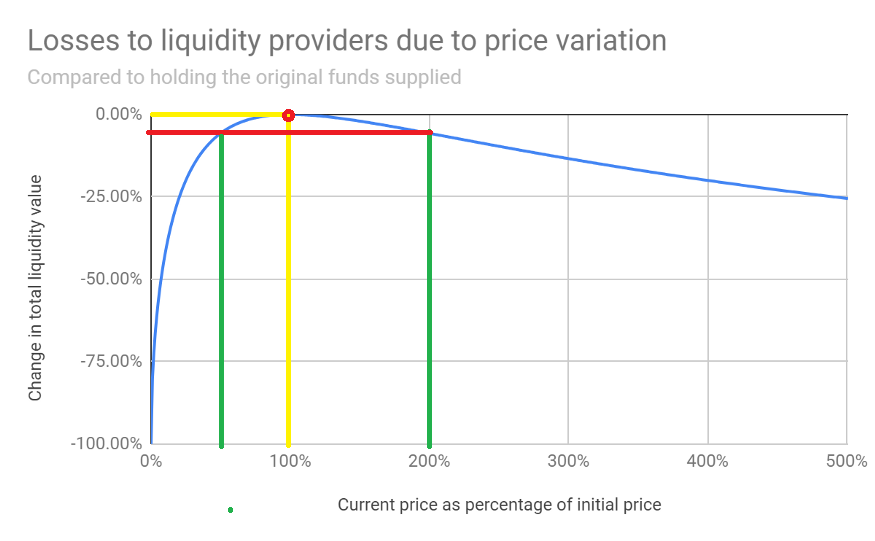Income.
We once experienced impermanence loss during a liquidity mining, because the pledged token price tripled during the liquidity mining period, resulting in the mining revenue not outperforming the currency holding revenue, and finally we simply withdrew Pledge mining and directly hold tokens.
In essence, impermanence loss actually comes from arbitrage. The transaction price of AMM is derailed from the fair market price. For this reason, arbitrageurs are required to buy undervalued assets or sell overvalued assets until the price provided by AMM matches the external market. Therefore, the profits of arbitrageurs actually come from liquidity providers.
If the impermanence loss exceeds the liquidity gain, then the liquidity provider will no longer provide liquidity. Therefore, the magnitude of the impermanence loss is the key to determining whether the AMM DEX can operate normally.
The figure below shows the relationship between token price changes and impermanence losses:
Picture source: mechanical clock
Take three points as an example: the intersection of the yellow line and the blue line is when the external price does not change, the impermanence loss is zero; the intersection of the green line and the blue line is when the price drops by 50%, And after the price has risen 100%, the impermanence loss is -5.7%. It is not difficult to find that the impermanence loss is related to the magnitude of the price change, and has nothing to do with the direction of the token’s rise and fall.
-
The slippage is too high, AMM DEX is only applicable to daily small exchanges
Users often complain that the transaction slippage in Uniswap is too high and not cost-effective. Indeed, in addition to the considerable liquidity of a few liquidity pools, the liquidity pools of most tokens are not suitable for larger transactions.
The problem of high slippage is also a major reason that hinders institutional investors and new users from entering AMM DEX.
In the first part of the article, we have given an example to explain the logic behind slippage. Slippage is a major drawback of DEX pricing with functions. It also attracts arbitrageurs, and arbitrage behavior brings impermanence. The appearance of loss.
Interestingly, there is some mutually exclusive relationship between slippage and impermanence loss. What reduces the slippage chase is a kind of price stability, and what reduces the impermanence loss is a kind of price
